Learn to Cook Italian Food in 7 Easy Steps
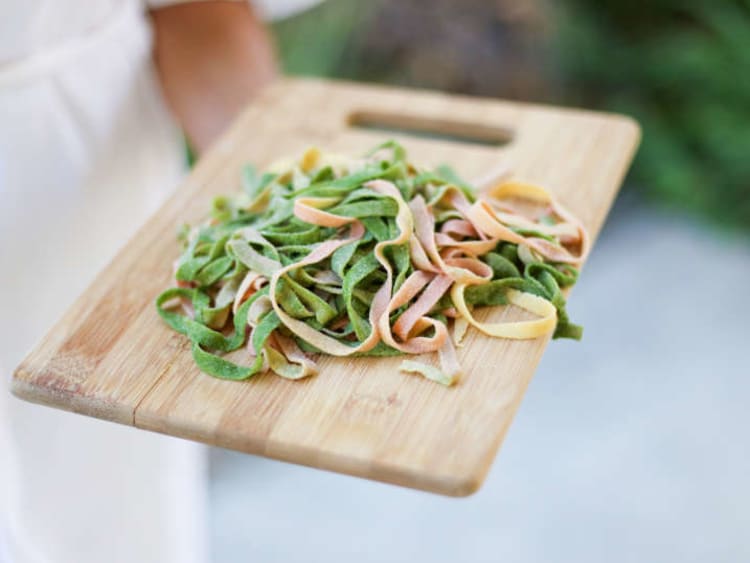
You’ve made your decision: You want to learn to cook Italian food just as filling, comforting and delicious as your favorite Italian restaurant. But where do you start?
Italian food is as rich in culture as it is in flavor, packing history into every bite. Italian dishes top the lists for many favorite foods due to their heartiness and flavor, and it’s no surprise it’s such a popular cuisine to cook at home.
It may seem intimidating to learn to cook Italian food, but don’t worry — a few simple steps will have you well on your way to whipping up Italian culinary masterpieces in no time. Use the below list as your starting point, and get cooking. Buon appetito!
Jump to Section
- Start With Simple Ingredients
- Understand Meal Order
- Make Soffritto as a Base for Your Sauce
- Learn to Pair Pasta With Sauce
- Season as You Cook
- Enhance Flavors With Herbs
- Pay Attention to the Process


1. Start With Simple Ingredients
When you learn to cook Italian food, simpler is always better. Focus on entry-level dishes — like your favorite basic pasta dish, for example — and try to recreate it at home, paying close attention to cook times, technique and flavor profiles. Tomato, pesto and cream-based sauces are all fairly beginner-friendly and will allow you to get your bearings.
Stock your fridge and pantry with some Italian cooking staples like extra virgin olive oil, fresh and canned tomatoes, various cheeses (Parmigiano-Reggiano, mozzarella, ricotta), fresh herbs (basil, oregano, parsley) and your favorite types of pasta. That will give you a jumping-off point as you plan your first meals.
If you want some guidance along the way, you can learn to cook Italian food with the help of an expert chef. You can browse the collection of hands-on cooking classes near you or turn your kitchen into a culinary classroom with live online cooking classes. It’s hard to beat learning to cook Italian food from a chef who trained — or lives! — in Italy.
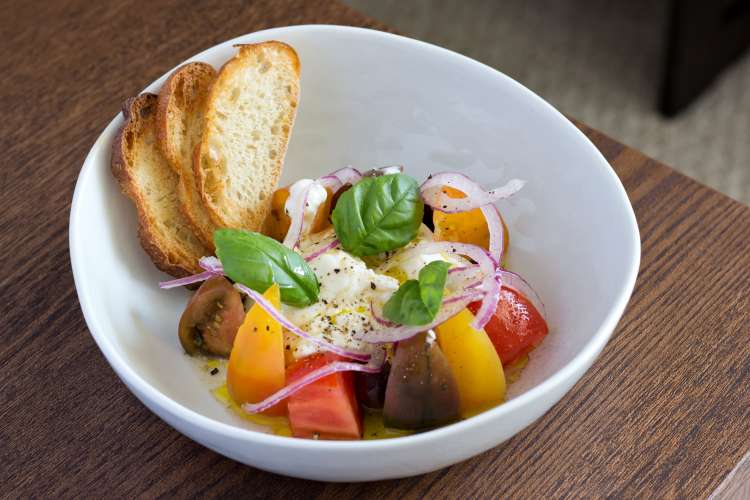
2. Understand Meal Order
As you learn to cook Italian food, you’ll realize that meals often follow an order:
- Antipasto: You’ve likely been familiar with antipasto long before you decided to learn to cook Italian food. This is most similar to the American appetizer. Try bruschetta, pâté on toast, fried sardines or any Italian finger food you like.
- Primo: Pasta, polenta or soup (zuppa if you’re trying to impress). The carbs before the storm. Make it delicious, but don’t make too much. The primo comes in smaller portions than American pasta dishes
- Secondo: The main dish; a meat or protein. Keep this simple, especially if you’re just starting to learn to cook Italian food. Grilling or sautéing your meat, whatever type it may be, is a great choice that is difficult to blunder.
- Contorno: Side dish. Usually vegetables. Can be served with the primo or the secondo.
- Dolce: Dessert. On a time crunch, we recommend biscotti dipped in coffee, dessert wine or gelato. Or just gelato.
- Caffè: Coffee. Usually espresso. Great if you’re going out after this lovely Italian excursion.
Don’t try to make all of these for one dinner; especially as a beginner who is just learning to cook Italian dishes. But use them as guidelines. If you’re really in the mood for pasta, make a primo and a contorno while eating a leftover antipasto.
It’s easier to learn to cook Italian food when you have more structure. If you know the slots to fill, you can fill them easily. Color inside the lines for this dinner. Dash out an antipasto by putting some Italian toppings on toast, grab yourself some simple pasta for the primo, sauté some beef in a tomato sauce for your secondo, steam some broccoli for contorno and bam: You have four of six dishes, and you probably don’t even need all of that.

3. Make Soffritto as a Base for Your Sauce
You cannot learn to cook Italian food without mastering a sauce. And a soffritto — an aromatic base of sautéed diced carrots, celery and onion — is the essential foundation to not only sauces, but stews, soups and more. Pro tip from an expert Italian chef: You can also toss in a whole clove of garlic to pack more flavor, removing it before serving.
Take your time with this step. Don’t rush the process by adding everything all at once. Let everything turn golden brown. If your kitchen doesn’t smell like garlic, onions and olive oil, your soffritto is not done. As you learn to cook Italian dishes, you’ll find this quintessential process plays an important role in Italian cuisine.
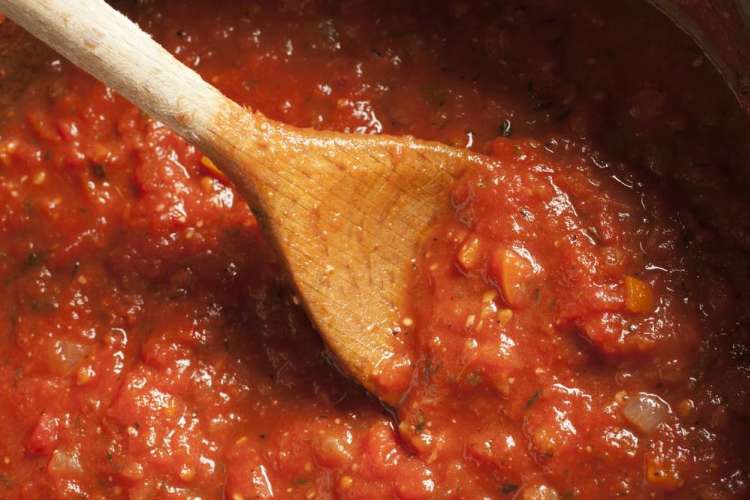
4. Learn to Pair Pasta With Sauce
There are rules of thumb for pairing pasta types with the sauces that love them. As you learn to cook Italian food, these guidelines can be helpful:
- Chunkier sauces call for tubular pasta, preferably with ridges. You want the sauce to adhere to the pasta as much as possible.
- Wide, flat ribbons work well with creamy sauces. The thicker the sauce, the wider the noodle. The huge surface area allows them to catch as much sauce as possible.
- Long, round pasta like spaghetti are for oil or tomato-based sauces because these sauces coat the noodles evenly.
Add a generous pinch of salt, but not oil, to your pasta water. Adding oil is a common myth you’ll find when you learn to cook Italian food: Oil prevents the pasta from forming the ever-so-slight tack that lets it cling better to sauces and seasonings. You’ll also want to save some of that pasta water when you're done. Add it to your sauce for extra adhesion to the pasta and to give the sauce a creamier texture.
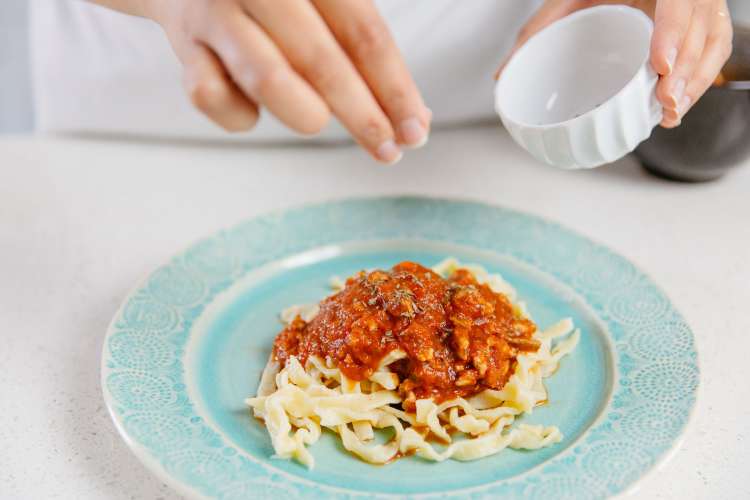
5. Season as You Cook
A fundamental step in the process to learn to cook Italian food. Your dishes can taste however you want, but you have to take control of it. Salt, pepper, red pepper flakes, garlic powder — it’s all up to you, but remember not to add too much or experiment with everything all at once. Even if you make mistakes the first few times, you’ll learn how to punch up and pair flavors for the future.
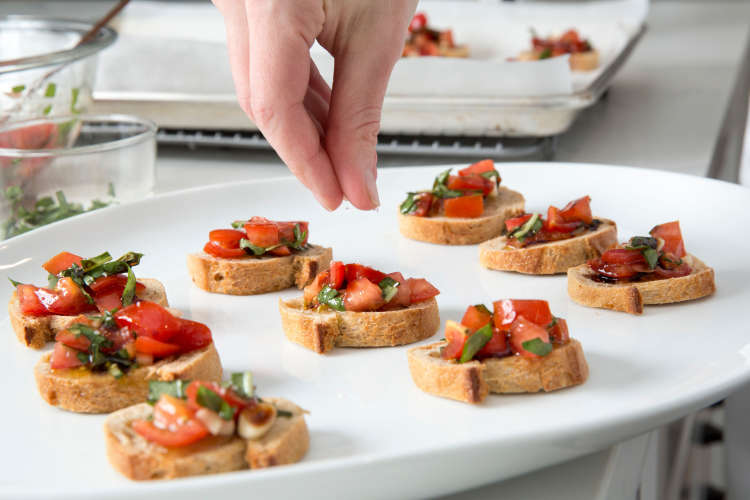
6. Enhance Flavors With Herbs
In addition to keeping spices on hand, herbs can be a great tool in the kitchen as you learn to cook Italian food. Here are a few staples everyone should have at their disposal, fresh or dried, whether you're a beginner or ready to learn to cook like a chef:
- Basil (basilico): The most famous herb you’ll come across when you learn to cook Italian food, basil is queen. You can’t add it to everything because it is such a dominant flavor that it might overpower other ingredients
- Oregano (prigano): A savory friend to the tomato. Whenever you see a tomato in a recipe, seriously consider adding some oregano, preferably fresh.
- Parsley (prezzemolo): Often a key ingredient in soffritto, parsley is one of the foundations of Italian cooking. Distinct but not overpowering, parsley allows for the building of many complex flavors.
- Sage (salvia): Include this in your pantry when you learn to cook Italian food so you can make sage butter if your more complicated sauce goes sour at the last minute. Sage butter and its kindred are some of the most delicious sauces in Northern Italian cooking.
- Rosemary (rosmarino): Rosemary grows wild in the Italian countryside, which is why it has such a strong presence in Italian cuisine. Use this earthy, fragrant herb in grilled or roasted meats, poultry, seafood and even vegetables.
- Bay leaves (alloro): Bay leaves don’t exactly taste great on their own, but while you learn to cook Italian food, you’ll find these pungent, slightly bitter herbs give heavy soups, stews and sauces a unique complexity as they steep.
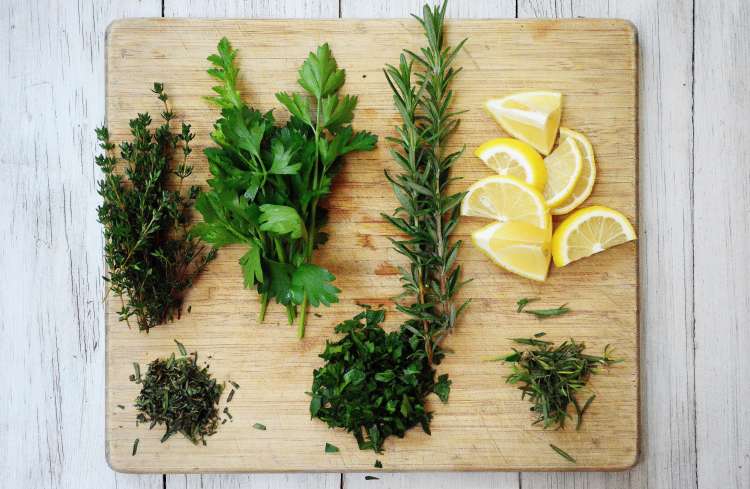
7. Pay Attention to the Process
When you learn to cook Italian food, you may find yourself browsing cookbooks or other recipes resources. When you pick a dish to try, it’s critical that you pay attention to the process just as much as the exact measurements and ingredients. Learning the steps and timing of the cooking process is a key part of making sure your dishes turn out successful.
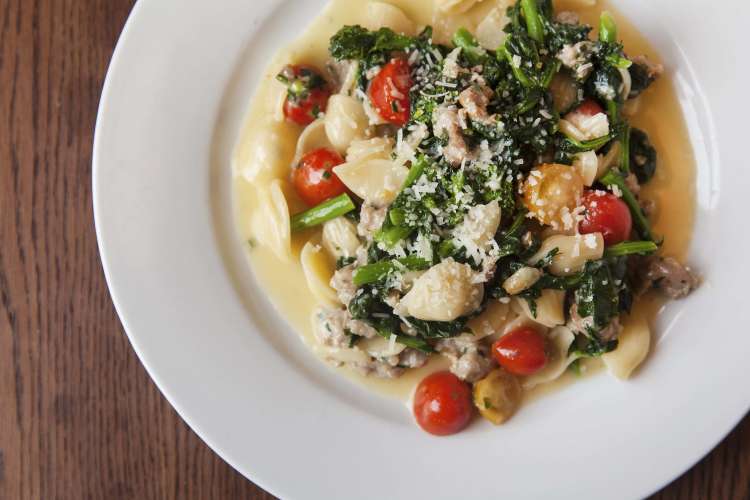
Italian food has a rich, storied history, and cooking it yourself can be as rewarding as it is delicious. As you learn to cook Italian food, keep these tips in mind and use them as your jumping-off point. You’ll be churning out restaurant-worthy fare in no time.



FOOD FOR THOUGHT?
Join the conversation.